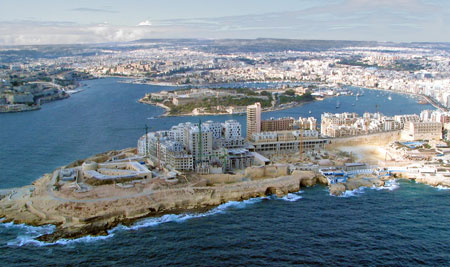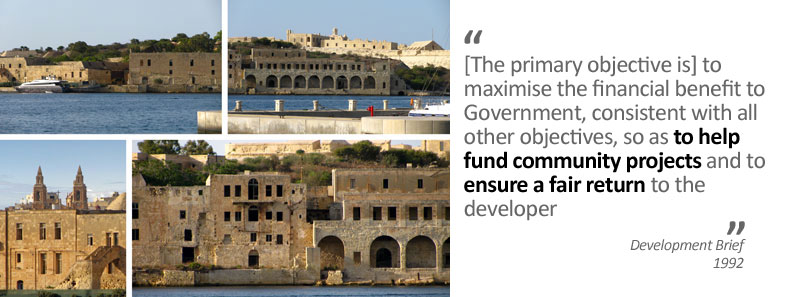Manoel Island and Tigne' Point Development: Valuation
Date : 1997Client : Ministry of Finance and Commerce, Malta

The scope of this study was the valuation of usable land within Manoel Island, originally known as l'Isola del Vescovo, and Tigne` Point, Malta. The former has an area of approximately 30.5 hectares whilst the latter is approximately 13.5 hectares. Manoel Island is renamed after the Portuguese Grandmaster António Manoel de Vilhena, under whose leadership the fort, designed to accommodate up to 500 soldiers, was erected in the early part of the eighteenth century. The fort includes a quadrangle, parade ground and an arcade, and once housed a chapel decicated to St Anthony of Padua. The islet includes the Lazzaretto, a quarantine hospital completed in the 1640s. Tigné Point is renamed after Louis d'Augbigne Tigné, the military engineer of the original designs of the fort for Manoel Island. Due to its strategic location, this site had a turbulent military history spanning more than four centuries.

The magnitude of the development, with a gross site area of more than 40 hectares, was such that one was not dealing simply with the valuation of a project but with the valuation of a proposed village on a historic island and a historic peninsula. Thus, in deriving a fair value of the land the following issues were assessed: the Development Brief; socio-economic impacts, property valuation, critical assessment of previous land valuations and valuation of land at Manoel Island and Tigne` Point. In completing this analysis, various case studies were analysed, the most notable was Ínsua Fortress in Portugal. This fort, erected on a rocky islet, includes a convent and a church. The Holy Mary Ínsua Convent, declared a National Monument in 1910, dates from the fourteenth century, but in the sixteenth century a fortress was built adjacent to the convent to serve both military and clerical functions.

The market value of property is dependent on the potential development of the land and not on the land owner. If land belongs to Government, as was the case, then Government, like any other private investor, has the right to a fair value of its property including any profits which such private investors would be seeking.
Click here to download the Valuation of Defined Footprint of Land to be Developed.
